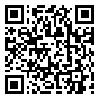Volume 1402, Issue 1 (5-2023)
2023, 1402(1): 0-0 |
Back to browse issues page
Reza Pakzad 

 , Morteza Akbari
, Morteza Akbari 

 , Ali-Ashraf Aivazi
, Ali-Ashraf Aivazi 

 , Iraj Pakzad
, Iraj Pakzad 

 , Soraya Sheikhi
, Soraya Sheikhi 

 , Mohammad Reza Akbari
, Mohammad Reza Akbari 
 , Javad Rafinejad
, Javad Rafinejad 



 , Morteza Akbari
, Morteza Akbari 

 , Ali-Ashraf Aivazi
, Ali-Ashraf Aivazi 

 , Iraj Pakzad
, Iraj Pakzad 

 , Soraya Sheikhi
, Soraya Sheikhi 

 , Mohammad Reza Akbari
, Mohammad Reza Akbari 
 , Javad Rafinejad
, Javad Rafinejad 

Ilam University of Medical Sciences
Abstract: (1394 Views)
Hygiene is one of the main factors that have a significant impact on individual and community-level health. Lice infestation or pediculosis is of global health problem, much more common in developing countries. Lice are insects of the order Phthiraptera living as an obligate ectoparasite on the body of humans and animals. Human infestations occur on the head (The most common type), body, and pubic parts. Pediculosis also known as head lice infestation, is caused by Pediculus humanus capitis. Despite preventive activities, head lice infestations persist at different ages and they spread most commonly by close person-to-person contact in densely populated areas because lice cannot hop or fly from one host to another. In addition to direct contact, it is also transmitted through personal stuff such as combs, hats, scarves, underwear, and towels. Head and pubic lice may cause discomfort and embarrassment to people but have no role in transmitting any diseases. To date, various studies have been performed on the Pediculus capitis prevalence among primary school-aged children around the world. Economic, social, and cultural status are very important contributors to lice infestation. Children are infested with a higher percentage than adults. The highest infestation was reported in children 5-11 years age group. It is more common in girls than boys and also in whites than blacks. The current research aims to estimate pediculosis capitis prevalence in school-aged children in Iran through meta-analysis.
Received: 2021/09/18 | Accepted: 2022/10/29 | Published: 2023/03/1
| Rights and permissions | |
 | This work is licensed under a Creative Commons Attribution-NonCommercial 4.0 International License. |
